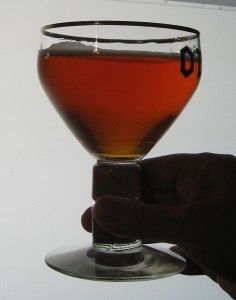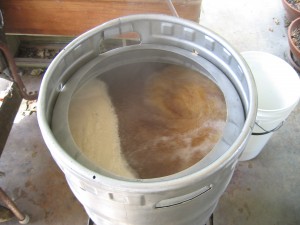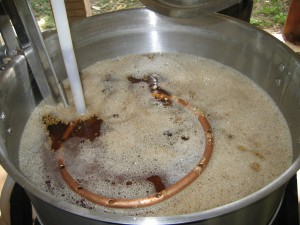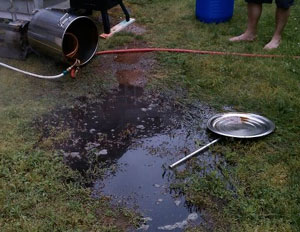My New Year’s brewing resolutions for 2014:
Archives for December 2013
Chris’s Brew Year’s Resolutions
What Measurements to Record on Brewday: I

Whether on paper or on a computer or tablet, a brewing notebook is a repository of your accumulated brewing knowledge.
Learning how to brew better beer involves learning not only the abstract concepts, but the practical details of how things work in your brewery. One of the best ways to find out how your system works and have a repository of this information is to keep a brewing notebook. A brewing notebook is not just a place to store all your recipes — if you take detailed notes on your brewdays, it will contain a wealth of information. This information will allow you to check on information from prior beers. In addition, and perhaps more importantly, it can help you plan your future brew days and make future brewdays run more smoothly. In general, there should be a point to every measurement you record. On the other hand, measuring and recording various things during your brewday doesn’t take long and may be useful later. Here are some of the things you can record in your brewing notebook and how they can help you.
Quarterly Index: II
Here is an index of the articles that ran in the last three months. Before the end of the year, we’ll have a static index page that is updated once a week.
Making Wine from Juice: Intro

Making wine from juice allows beginning winemakers to make their wine without purchasing expensive equipment.
Longtime homebrewers may, at some point, wish to branch out a bit. Many eventually add mead, cider or both to the list of fermented beverages they produce. And of course, wine is also a popular option.
Homebrewers can introduce themselves to winemaking by trying kit wines. Kit wines contain everything you need to make wine in one box, presuming you have a bucket fermenter and all the usual equipment (hydrometer, tubing, etc.) The best kits are simple to make and the resulting wine can be excellent if you follow the directions closely. However, the simplicity and “by the numbers” approach of kit wines may not be attractive to homebrewers who wish to make wine “from scratch.” Unfortunately, making wine from grapes requires some reasonably expensive (and fairly large) pieces of equipment and this can discourage some from trying it.
For homebrewers who’d like to try winemaking without having to buy a lot of equipment, but still retain the freedom of making wine from raw ingredients (or nearly so), there is frozen grape juice. There are companies that crush quality wine grapes from vineyards in wine growing regions and freeze the resulting juice. This can be used by home winemakers to make high quality wine.
Overview of How Wine in Made
In order to introduce the topic of making wine from juice, I’ll review how wine is usually made. Winemaking starts in the vineyard where wine grapes are grown. Most wines you would buy are made from grapes of the species Vitis vinifera, and these include Cabernet Sauvignon, Pinot Noir, Merlot, Chardonnay and Riesling.
Brewing Disaster Lessons
This year, as in years past, Steve Wilkes and I gathered around a microphone to share stories about brewing disasters sent in by listeners of Basic Brewing Radio. All were sent in with a spirit of fun, even though some of them end in ruined beer, property damage, or even personal injury. After reading dozens of letters, certain themes emerge – themes that we can all learn from in our brewing efforts. Here are my top five. [Read more…]









Recent Comments